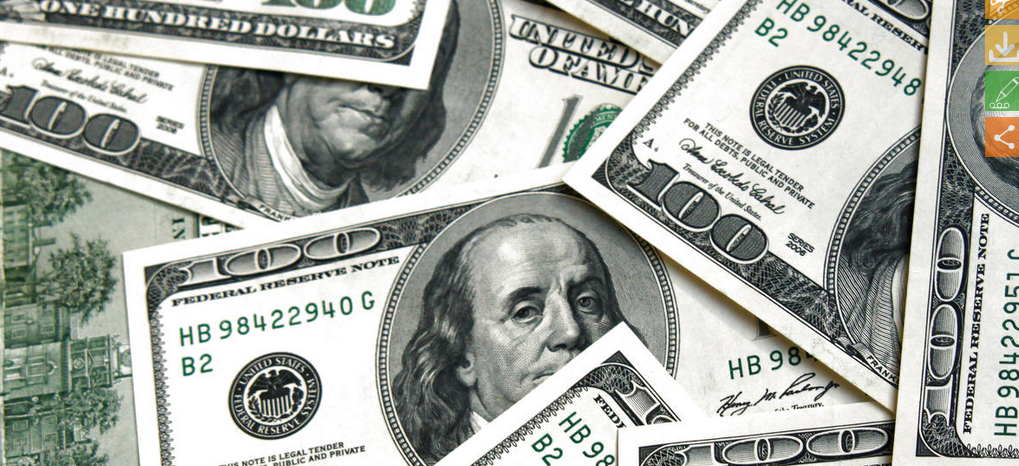- The World Health Organization called an emergency meeting today; the dollar continues to climb
- The FOMC meeting was a non-event; US advance Q4 GDP will be reported
- Risk-off sentiment has derailed curve steepening trades
- Implied rates still suggest that today’s BOE meeting is a coin toss
- Turkish central bank released its quarterly inflation report; Asian markets got hit hard again with rising virus concerns
 The dollar is broadly firmer against the majors ahead of the BOE decision. Yen and Swissie are outperforming, while Nokkie and Aussie are underperforming. EM currencies are mostly weaker. The CEE currencies are outperforming, while RUB and TWD are underperforming. MSCI Asia Pacific was down 1.8% on the day, with the Nikkei falling 1.7%. MSCI EM is down 2.0% so far today, with China markets closed until February 3. Euro Stoxx 600 is down 0.8% near midday, while US futures are pointing to a lower open. 10-year UST yields are down 3 bp at 1.55%, while the 3-month to 10-year spread is down 3 bp at +1 bp. Commodity prices are mostly lower, with Brent oil down 2.2%, copper down 0.4%, and gold up 0.3%.
The dollar is broadly firmer against the majors ahead of the BOE decision. Yen and Swissie are outperforming, while Nokkie and Aussie are underperforming. EM currencies are mostly weaker. The CEE currencies are outperforming, while RUB and TWD are underperforming. MSCI Asia Pacific was down 1.8% on the day, with the Nikkei falling 1.7%. MSCI EM is down 2.0% so far today, with China markets closed until February 3. Euro Stoxx 600 is down 0.8% near midday, while US futures are pointing to a lower open. 10-year UST yields are down 3 bp at 1.55%, while the 3-month to 10-year spread is down 3 bp at +1 bp. Commodity prices are mostly lower, with Brent oil down 2.2%, copper down 0.4%, and gold up 0.3%.
The World Health Organization called an emergency meeting today. We could get a stronger statement about the virus, so beware of more negative headlines. The death toll jumped to 170 and nearly 8,000 cases have been confirmed worldwide, now including India. Here is Bloomberg’s page dedicated to monitoring the virus. https://www.bloomberg.com/graphics/2020-wuhan-novel-coronavirus-outbreak/
The dollar continues to climb. DXY traded yesterday at the highest level since December 2 and is nearing the November 29 high near 98.544. Break above that would set up a test of the October 8 high near 99.249 and then the October 1 high near 99.667. The euro remains heavy and is nearing a test of the November 29 low near $1.0980. Elsewhere, sterling is struggling to remain above the $1.30 area ahead of the BOE decision today, while USD/JPY has been pushed back below 109 due to risk-off impulses. We remain bullish on the dollar and look for further broad-based gains if risk-off sentiment deepens.
AMERICAS
The FOMC meeting was basically a non-event. As many expected, it tweaked the IOER rate higher by 5 bp in what can be described as a purely technical move. While nothing else really changed, Powell covered a lot of ground in his press conference. 1) T-bill purchases will continue into Q2 as previously stated but sizes will likely be adjusted as the Fed approaches ample reserve levels, 2) a standing repo facility may have a role even with ample reserves but no decision has been made, 3) the Framework Review continues and should conclude mid-year, 4) Fed sees grounds for cautious optimism on the global economy, but 5) the Fed is closely watching the potential impact of the coronavirus. Yet when all was said and done, the Fed stuck to its guns and signaled no change in its policy stance.
During the North American session, US advance Q4 GDP will be reported. Growth is expected to remain steady 2.1% SAAR. Note that the Atlanta Fed’s GDPNow model estimates Q4 GDP growth at 1.7% SAAR. Elsewhere, the NY Fed’s Nowcast model has Q4 growth at 1.2% SAAR while its estimate for Q1 growth stands at 1.7% SAAR. We suspect that the Atlanta estimate is closer to the truth and we are clearly far from recession. Weekly jobless claims will also be reported today.
Risk-off sentiment has derailed curve steepening trades. At 1 bp, the US 3-month to 10-year curve is the flattest since October 10. On October 9, the curve was inverted. And it’s not just the US, as the German 3-month to 10-year curve is now at 14 bp. These moves represent a roughly 40 bp flattening in the US and 35 bp in Germany. The 2- to 10-year segments of the curves have flattened about half of that, but in both cases the shape of the curves are back to how they looked last October. That said, we do not think the US economy will be significantly impacted by the coronavirus and so the US curve flattening is due more to the flight to safety than true recession fears for the US.
Mexico reports Q4 GDP. The economy is expected to contract -0.5% y/y vs. -0.3% in Q3. CPI rose only 2.8% y/y in December, below the 3% target and the lowest since August 2016. The economy remains weak and so the central bank is likely to continue its easing cycle. Next policy meeting is February 13 and another 25 bp cut to 7.0% is expected.
EUROPE/MIDDLE EAST/AFRICA
Implied rates still suggest that today’s BOE meeting is a coin toss. Of the 61 analysts polled by Bloomberg, 44 see no change and 17 see a 25 bp cut to 0.5%. Elsewhere, WIRP suggests around 50% odds of a cut. For an in-depth look at the UK outlook, please see our recent piece “UK Economy Continues to Suffer.” We are on the side of a “dovish hold.” Recent data have come in a bit stronger, there are some positive fiscal impulses in the pipeline, and financial conditions have been easing (the Bloomberg index is at the highest since early 2018). That said, recent dovish communication has guided investor expectations towards eventual easing as a cut is still nearly priced in by mid-year. The pound is likely to strengthen by less in the event of a hold than it would depreciate in the case of a cut.
The Turkish central bank released its quarterly inflation report. As expected, it left the door open for more easing by keeping its year-end inflation forecast at 8.2% and 5.4% for end-2021. Officials are trying to walk the line between bringing interest rates to single digits (as signalled by President Erdogan) while keeping real rates positive. Note that real rates are slightly negative now after the recent pickup in CPI and we note that markets are less sanguine on inflation, expecting year-end inflation around 10%. We suspect officials would err on the side of dovishness and bringing interest rates to single digit, thus delaying their goal of keeping real rates positive. The central bank just cut rates 75 bp to 11.25% this month and the next policy meeting is February 19.
ASIA
Asian markets got hit hard again with rising virus concerns. Equity markets in Taiwan and Vietnam reopened today to the tune of a 5.7% and 3.2% drop, respectively. TWD fell the most since June 2016. Taiwanese President Tsai said her administration is preparing measures to stabilize its equity and FX markets, adding a special budget may help counter the impact of the coronavirus. The yuan continues its (relatively) sharp depreciation, as USD/CNH traded above the 7.00 level for the first time this year. When China’s markets reopen February 3, expect CNY to play some serious catch-up with CNH.
Full story here Are you the author? Previous post See more for Next postTags: newsletter,Uncategorized
























